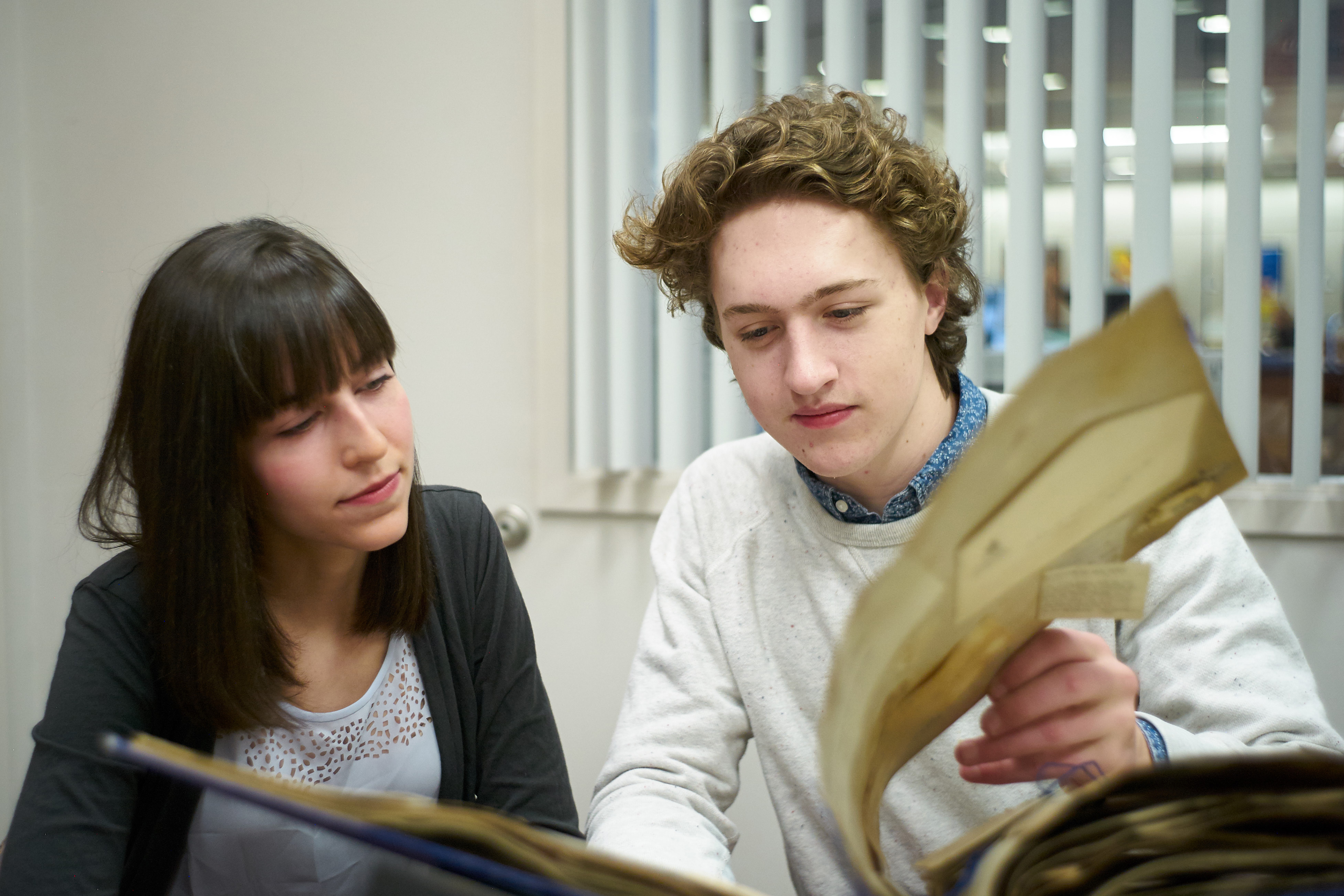UConn’s student-operated radio station is looking to the University’s past to continue moving forward with its digital future.
The debut earlier this year of “The Story of Storrs” marked the first originally developed podcast production for WHUS that is available via iTunes as well as on the station’s website. Like many radio stations, WHUS has posted regularly scheduled talk shows as podcasts on its website in an effort to expand listenership from traditional over-the-air broadcasting to mobile devices, but “The Story of Storrs” is the first production created as a podcast.
“Audio is a powerful medium. You can bring it everywhere. It leaves your hands free, your eyes free,” says Jason McMullan, the station’s program coordinator. “The heavy audio consumers have moved on to personal devices. They’re picking what they’re going to listen to and the order it happens. Podcasting is our way to make as much of our content as possible in that format.”
Charlie Smart ’18 (CLAS), a journalism major who is news director for WHUS, had been thinking about creating a podcast when he read an online item about UConn history. He asked Helen Stec ’18 (CLAS), a history and English major who is part of the news staff, to help develop the idea while each of them was involved with an internship that provided opportunities to further develop the skills required to produce a podcast – Smart working last summer on news stories at WNPR, Connecticut’s local public radio station, and Stec conducting research this semester at the Mansfield Historical Society.
Smart met with McMullan to discuss the options for program format and length, and the technical requirements for the podcast. Both are avid podcast listeners, and they reviewed the production elements for a successful podcast that can build an audience. The result is a conversational story-telling format with interviews, crisp writing, and varied music in the background, akin to long-form National Public Radio stories. Each podcast is between 10 and 15 minutes in length.
The first two episodes of “The Story of Storrs” trace the origins of UConn as The Storrs Agricultural School and the transition to Connecticut’s land grant institution as the Storrs Agricultural College. These podcasts serve as the foundation for the production. They include readings from letters and documents found in the University Archives, which are part of Archives & Special Collections at the Thomas J. Dodd Research Center. There are also comments from interviews conducted with Bruce M. Stave, Board of Trustees Distinguished Professor of History Emeritus and author of the 2006 history of UConn, Red Brick in the Land of Steady Habits, as well as from Betsy Pittman, archivist in Archives & Special Collections at the Dodd Research Center; Dennis Pierce, director of UConn Dining Services; Noel Miller, president of the Connecticut State Grange, a fraternal organization that supports the agricultural community; and Nathan Sorber, co-editor of the 2013 book The Land Grant College and the Reshaping of American Higher Education (Transaction Publishers).
“There’s two types of episodes that we’re trying to do. There are those that take a short snapshot of time, like the land grant and the Vietnam War protests, and then there’s the long survey ones, like the history of Jonathan and the history of women at the University,” says Smart. “We’re trying to do different formats.”
Future episodes of “The Story of Storrs” will focus on various aspects of campus life, landmark events, and personalities that are part of the 135-year history of UConn. The most recently posted episode is “UConn and the Vietnam War,” which examines campus protests during the mid-1960s. Stec and Smart are researching episodes on the history of women on campus, the impact of the House Un-American Activities Committee hearings on Storrs in the early 1950s, and the Jonathan the Husky mascot.
Stec says Stave’s book is a source of interview subjects they are hoping to find for first-person accounts to use in various episodes. “The book was helpful because it had names in it,” she says. “Once you get the names, you have Google, and you can go through The Daily Campus archives and Linked-In and find people.”
Pittman, the archivist who has helped guide the students in their research, says Smart and Stec had already put in a tremendous amount of work before they came to the Dodd Center. “They looked in the right places and asked the right questions,” she says. “As a student project, it’s best that the students pick out things they think other students will be interested in. What they find of interest, that’s what they’re going to be enthusiastic about. When I listened to the second podcast on the Grange, it just blew me away. It’s very accessible. When the first story came out, we put a link to it on our blog because they are using historic documents. They’ve picked topics that would pique people’s interest.”
McMullan adds that the initial listener response to the podcasts is promising, with about 100 downloads from the WHUS website.
“The way podcasts grow is that people recommend them to others,” he says. “These were good numbers for a podcast launched by an institution that hasn’t done it before. Charlie and Helen have a lot of material they could cover, and there’s a lot of interest. They’ve been contacted by people who listened and made suggestions for other episodes. That form of listener engagement means you have people excited about the subject.”






